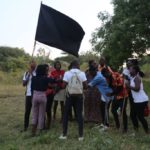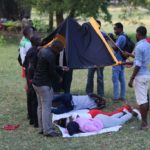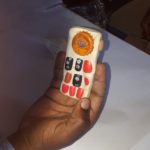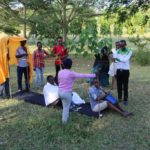In February 2020, Łukasz Jastrubczak (Ph.D.) conducted art courses at Pwani University in the field of sculpture and composition. He decided to base his workshops on activities/games that a Polish art group “KwieKulik” conducted in the 1970’s. During the first day, students got accustomed to the basic terms of composition. Jastrubczak used the rules of the game that “KwieKulik” conducted in Arnhem in the 1970’s, for the students at Pwani to practice decision making while arranging composition, and to apply specific terms to it. There were 3 big sheets of paper. Each paper was a space for two groups to communicate with each other by means of composition, using mainly geometrical figures cut out of coloured paper, or simple ornaments drawn with pen. If one group for example made a first step by arranging triangles to create a symmetrical harmony, the other group in the next step should have rearranged the composition, and “answer” to it. There were around 10 steps for each group to conduct. What is interesting is that all the groups had problems with constructing imbalanced, diagonal, asymmetrical compositions.
For the second day of the workshops, students were asked to bring some materials that they would find on the street (sticks, waste materials, textiles) and some clay that they could dig up from the ground. Then students could select one of six themes to create a sculpture out of the collected materials. The themes were connected either to the compositional issues discussed during the first day (e.g. balance/imbalance, symmetry/asymmetry) or dealt with flatness and depth – experienced when using smartphones (e.g. scrolling, zooming in/out). Most of the sculptures were narrative in form rather than abstract. Yet some of the students had exceptional ideas for implementation the smartphone “moves” into the form of sculptures. For example, one student made three forms of the smartphone cast in clay in three different sizes, in reference to zooming in/out movement.
The last day of the workshop took place on the field at the Pwani University Campus. The activity was based on the “Game on Morel’s Hill” that was conducted with Oskar Hansen and his students (Paweł Kwiek and Zofia Kulik included) in the early 70’s in Poland. The game took the form of a visual communication. Two teams were formed. The players had 1.5-metre long sticks, a piece of white canvas approximately 1.5-metre long, and red canvas. While one team was making a ‘move’, the other was watching and subsequently had to respond to it. The players made 14 ‘moves’ in three hours.
Before the workshops students at Pwani University learned about the original “game” and its art-historical background. They were also introduced with basic principles of “open form” – the idea introduced by Oskar Hansen. In the game students used orange, white, and black fabrics, 6 sticks, and golden string. Students were divided into two groups (around 12-14 students each). Here one can see the documentation of all the moves : http://centrumcentrum.xyz/kilifieng.html
What was interesting according to the decisions that the students made, was a strong division of abstract, symbolical, and narrative thinking. In the discussion that was held with the students after the game was conducted, they spoke about a conflict that appeared between the two groups; one team accused the other of not understanding properly what they were communicating.
“Real African Living” (RAL) – a grassroots hotel initiative by two young men (Wastar and Kenny) living in Fumbini. Their space built at the seaside will host a satellite event of the first edition of the “DUOS” Art Festival. Local musicians from Kilifi were invited by RAL and Łukasz Jastrubczak to meet and to discuss their possible input on the festival’s timeline, and to be recorded singing: https://soundcloud.com/user-876384791
On February 2020 Łukasz Jastrubczak (Ph.D.) conducted art courses at Pwani University in the field of sculpture and composition. He decided to base his workshops on activities/games that a polish art group „KwieKulik” conducted in the 1970’s. During the first day, students got accustomed to the basic terms of composition. Jastrubczak used the rules of the game that „KwieKulik” conducted in Arnhem in the 1970’s, for the students at Pwani to practice the decision making while arranging composition, and to apply specific terms to it. There were 3 big sheets of paper. Each paper was a space for two groups to communicate with eachother by means of composition, using mainly geometrical figures cut out of coloured paper, or simple ornaments drawn with pen. If one group for example made a first step by arranging triangles to create a symmetrical harmony, the other group in the next step should have rearranged the composition, and to „answer” to it. There were around 10 steps for each group to conduct. What is interesting is that all the groups had problems with constructing inbalanced, diagonal, asymmetrical compositions.
For the second day of the workshops, students were asked to bring some materials that they would find on the street (sticks, waste materials, textiles) and some clay that they could dig out from the ground. Then students could select one of six themes to create sculpture out of the collected materials. The themes were connected either to the compositional issues, disscused during the first day, e.g. balance/inbalance, symmetry/asymmetry, or dealt with flatness and depth – experienced when using smartphones (e.g. scrolling, zooming in / out). Most of the sculptures were rather narrative in form than abstract. Yet some of the students had exceptional ideas for implementation the smartphone „moves” into the form of sculptures. For example one student made three forms of the smartphone casted in clay in three different sizes, what was reffering to zoom in/out movement.
The last day of the workshop took place on the field in the Pwani University Campus. The activity was based on the „Game on Morel’s Hill” that was conducted with Oskar Hansen and his students (Paweł Kwiek and Zofia Kulik included) in the early 70’s in Poland. The game took form of a visual communication. Two teams were formed. The players had 1.5-metre long sticks, a piece of white canvas approximately 1.5-metre long, and red canvas. While one team was making a ‘move’, the other was watching and subsequently had to respond to it. The players made 14 ‘moves’ in three hours.
Before the workshops students at Pwani University learned about the original „game”, and its art-historical background. They were also introduced with basic principles of „open form” – the idea introduced by Oskar Hansen. In the game students used orange, white and black fabrics, 6 sticks and golden string. Students were divided into two groups (around 12-14 students each). Here one can see the documentation of all the moves : http://centrumcentrum.xyz/kilifieng.html
What was interesting according to the decisions that the students made, was a strong division of abstract, symbolical and narrative thinking. In the discussion that was held with the students after the game was conducted, they spoke about a conflict that appeared between the two groups. One team accused the other of not understanding propperly what they were communicating.
“Real African Living” (RAL) – a grassroots hotel initiative of two young men (Wastar and Kenny) living in Fumbini. Their space built at the seaside will host a satellite event of the first edition of „DUOS” Art Festival. Local musicians from Kilifi were invited by RAL and Łukasz Jastrubczak to meet and to discuss their possible input into the festival’s timeline and to be recorded singing : https://soundcloud.com/user-876384791
Get in touch! Subscribe to our newsletter!
[mailpoet_form id=”1″]

